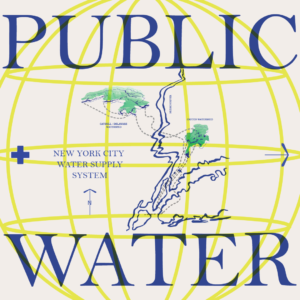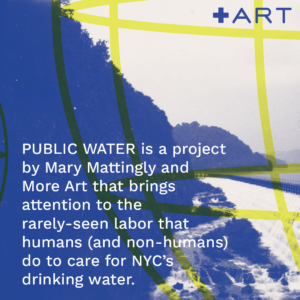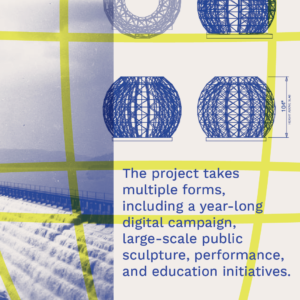A Transformational Art for a World in Transition
When it comes to art and life, the biggest questions I have today are:
In a world entrenched in harmful systems – from social and ecological harm from supply chains to an ethos of disposability, how can artists live responsibly and nonviolently? As artists and storytellers, can we imagine and co-create more flexible and inclusive realities that encompass respect, interconnectedness, nonviolence, and tolerance? How can artists ask folks to collectively dream when we can’t fathom what it will take to live outside of current cultural and ecological realities?
These are not ambitious questions – they are essential ones. They were some of the questions I started with when thinking through what tools I wanted in my toolkit, to learn how to better imagine, and work towards a co-creative potential. I believe every performance is an instigation, and every act influences the whole system. Art making is powerful, nonviolent art is a responsibility, and a transformational art pushes a system towards a transition: it can change the purpose of a system. The transition I work towards is one that centers a values-based economy with externalities accounted for, that centers ecologies that elevate maintenance as opposed to disposability, and that centers ethical social engagements where creativity abounds.
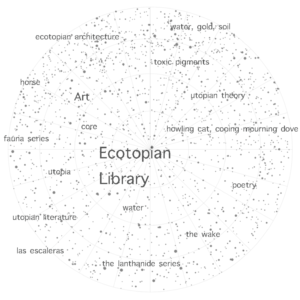
I’m exploring these tools in more depth and breadth in a project called Ecotopian Library, where I’m collecting stories that can be shared locally as the physical library moves from place to place. In its formative stages, ecotopianlibrary.com will soon become a more usable resource.
My art and much of my life is focused on strengthening reciprocal relationships between humans and nonhumans. I essentially gave up the objects in my possession, transforming them into seven large boulder-like forms in order to highlight my own consumption and move forward with a new framework around objects. Swale (2016–ongoing), for example, addresses public food, public land use, and water-based commons. It is an edible floating forest that makes fresh produce available for free in New York Harbor.
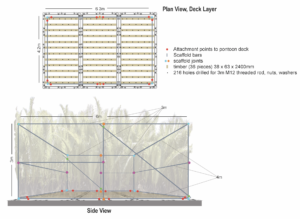
In 2021, Vanishing Point was a temporary floating sculpture and reading room that look to the evolution of plant life in the Thames Estuary over millions of years as the climate has changed. Specifically, I framed this study around the proliferation of the nipa palm in the estuary during the last period of global warming 55 million years ago.

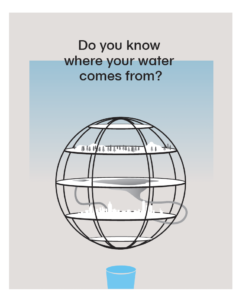
Similarly, in 2020, as artist-in-residence at the Brooklyn Public Library, I built a geodesic sphere that contained various tropical plants, the modern versions of those found in fossil records of the New York area. This was installed in the Central Library’s lobby.
In June 2020, I launched A Year of Public Water with +More Art, a non-profit organization that supports socially engaged public art projects. A Year of Public Water uses various platforms to share information about the sources of New York City’s water supply. I believe that knowledge of the watershed’s history is a key to a more regenerative future, but I also wanted to know how, as a NYC resident, I could be a better partner with those who inhabit the interconnected watershed areas, not just as an “end user”. The project’s goals include promoting stewardship of the water system that connects upstate to downstate and fosters greater cooperation between the communities that maintain it.
The website (www.public-water.com) relates the political, social, scientific, and economic background of New York’s water supply, stretching from geological time to the entangled histories of human intervention in the present day. Strict standards have to be met within the 2,000 square miles of watershed area in order to protect the water supply. With the introduction of the Clean Water Act and to avoid expensive filtration costs, working groups were fostered between city and state officials and the residents of the towns and farms along the watershed, resulting in cooperative efforts with regard to land use and funding strategies.
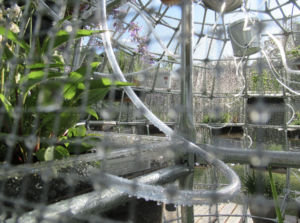 For Public Water, I created a sculpture called Watershed Core, a permeable sphere filled with plants that are an integral part of the nonhuman watershed communities. The 10-foot high structure was located in Prospect Park’s Grand Army Plaza entrance. Watershed Core resembles a sectional model of Earth and contains a functioning microcosm of the New York watershed. Rain water enters catchment basins at the top of the dome and is gravity fed through a tubing system, where it is filtered through several descending rows of plants, soil and rock. Ultimately, it flows into smaller containers, reservoirs that collect the purified water near the lowest portion of the dome. The design mimics the passage of water through the watersheds in New York State that provide 8.8 million New Yorkers with 1.3 billion gallons of clean water daily.
For Public Water, I created a sculpture called Watershed Core, a permeable sphere filled with plants that are an integral part of the nonhuman watershed communities. The 10-foot high structure was located in Prospect Park’s Grand Army Plaza entrance. Watershed Core resembles a sectional model of Earth and contains a functioning microcosm of the New York watershed. Rain water enters catchment basins at the top of the dome and is gravity fed through a tubing system, where it is filtered through several descending rows of plants, soil and rock. Ultimately, it flows into smaller containers, reservoirs that collect the purified water near the lowest portion of the dome. The design mimics the passage of water through the watersheds in New York State that provide 8.8 million New Yorkers with 1.3 billion gallons of clean water daily.
A Year of Public Water has reminded me that New York City’s water system was built from many cruel histories that have come with enormous expenses to those inside and outside of what is today considered NYC’s watershed, that spans from the Delaware to the Catskills to the Croton Watersheds. I know that addressing environmental, health, and economic conditions in and around New York City’s watershed and public water system is a vital precondition for the creation of a more just present and future for upstream and downstream New Yorkers, and that maintaining the watershed, from the natural systems to the social relationships that support it, is a continuous process.
